
The Rewilding Debate
A case in point: Rewilding Portugal
by Georgia Wingfield-Hayes
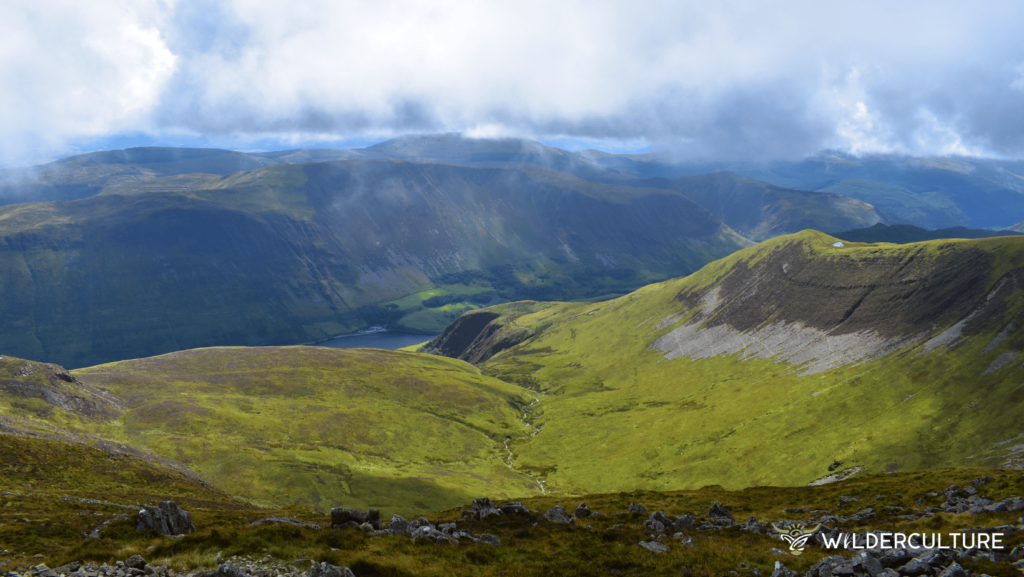
Welsh mountains
In 2019 Rewilding Britain was forced to withdraw from its Sea to Summit project in Wales, after angry backlashes from farmers who felt that their business activities would be disrupted and that they would be forced to shift their income streams to tourism.
Since then rewilding has become somewhat of a loaded term, but really the problem isn’t rewilding per se, but rather that any approach to change, if done in a top-down, colonialist manner, is always going to anger people because it disempowers them. Changes in land management in order to avoid climate chaos and biodiversity collapse, is required, but can only be effective if all involved are onboard.
Activists like George Monbiot have forced the debate to appear polarised, with farmers either having to carry on as usual, fighting for survival, or give it all over to rewilding. But the reality is that neither are necessarily the best solution, nor the only solution available for the farmer or the land.
Rewilding in Europe
There is no doubt that rewilding has a place in the world. There are tracks of abandoned farmland across the globe that are having a new lease of life thanks to these ambitious new ideas. Organisations like Rewilding Europe are doing some really interesting, important work to restore biodiversity and protect wild populations of endangered species and herbivore breeds. These projects are helping us learn things from how whole-ecosystems function, to wild-herd behaviour. However, like everything, rewilding is not without its problems.
I recently had the privilege of attending an open day at Rewilding Portugal, in the Côa Valley, in northeast Portugal. Rewilding Europe is the parent organisation and this project is the most southerly in their portfolio. As such, it perhaps offers the most challenging environment in terms of soil management.
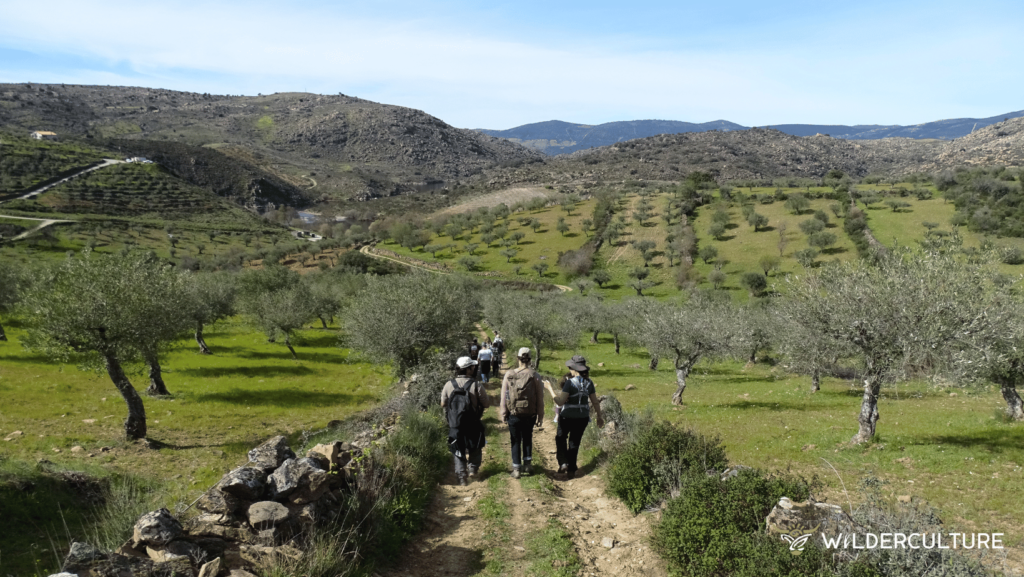
Olive orchards in the Côa Valley
The Côa Valley is surrounded by Olive and Almond orchards, vineyards and a scattering of the few remaining livestock herders. Native forest in the area comprises Cork and Holm Oak with pockets of deciduous Pyrenean Oak on north facing slopes. Climate change here is seeing a lengthening dry season in the summer, with rains being less predictable, falling sporadically in autumn, winter and spring.
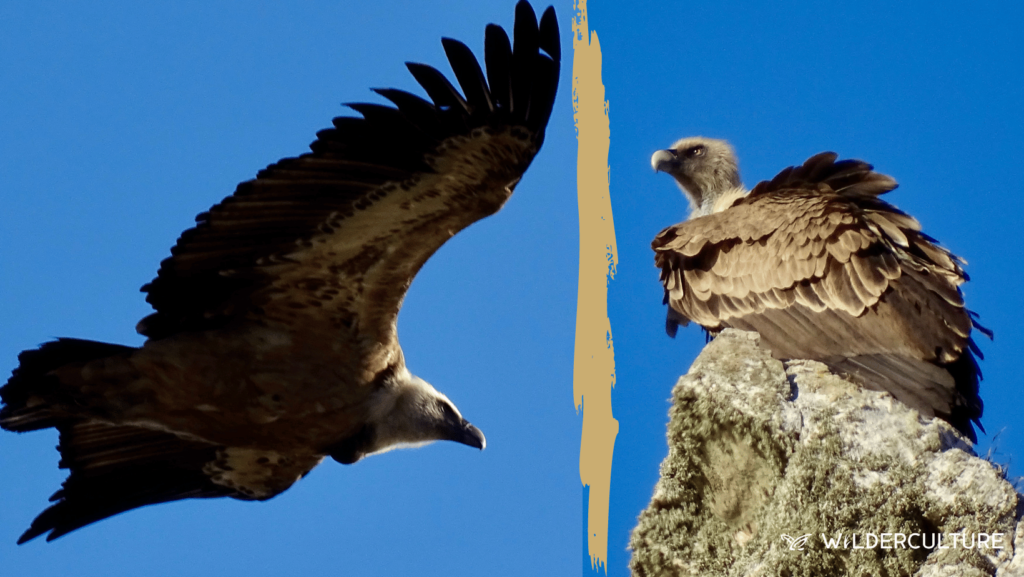
Griffon Vulture’s (Gyps fulvus) across the border in Monfragüe, Spain
Ecologists from the bright young guide team included Sara, who headed up the English speaking group amongst an otherwise Portuguese audience. Together we walk for an hour or so, up through the land to a viewpoint over the River Côa, which inhabits a wide ravine. We spot three Griffon Vultures catching a thermal above us and one Egyptian Vulture, cruising the river valley along with a Black Kite. Not far across the border, Spain is home to 90% of the European Vulture population, and projects like this in the Côa Valley are important in order to support the stability of Vulture and raptor populations in Iberia.
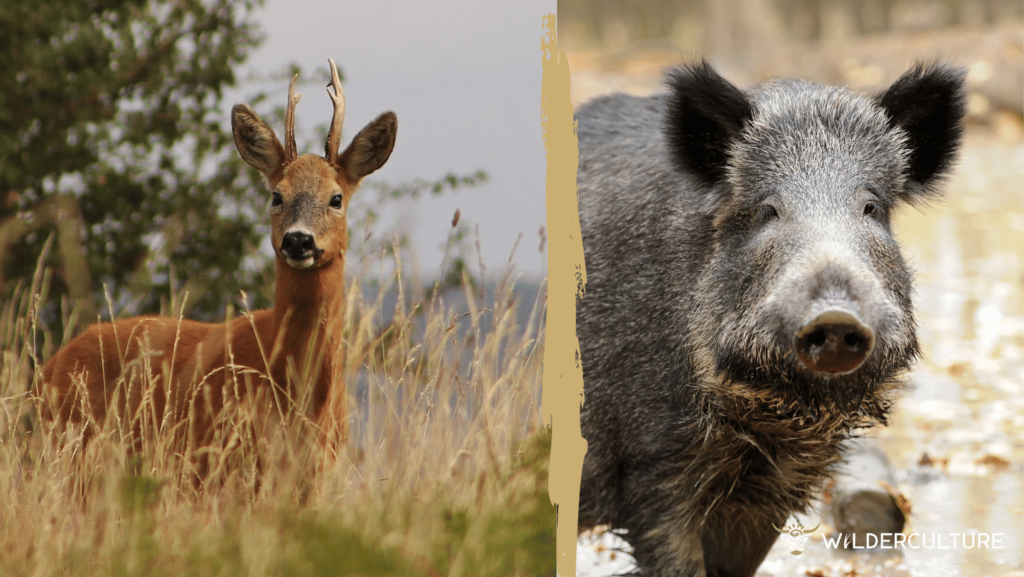
Roe Deer (Capreolus capreolus) and Wild Boar (Sus scrofa)
This land is home to an expanding variety of mammal species including Wild Boar and Roe Deer (whose populations are steadily increasing). The hope is that Red Deer and the Iberian Lynx will spread from populations across the border in Spain. Already here, but in troubling low numbers is the Iberian Wolf – one of the key species the project seeks to support.
Apart from these wild species, this project is also now home to the Sorraia Horse – a breed endemic to Iberia and the closest to the Horse’s wild progenitor on the peninsula. There are just over 2000 Sorraia Horses remaining in the world and the hope is that the rewilded population will greatly help the breed’s survival.
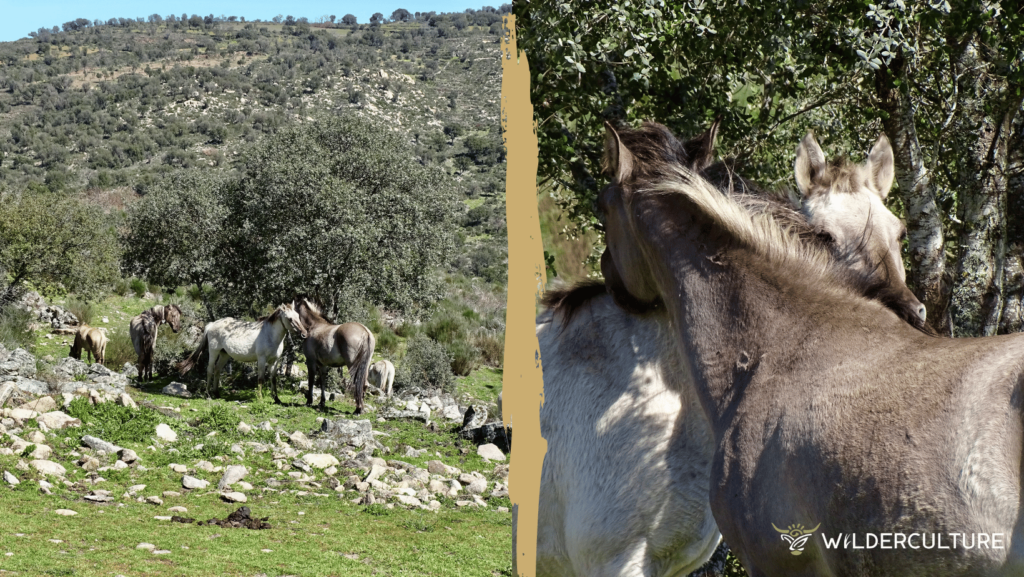
Sorraia Horses
Soon the horses will be joined by a Tauros Cattle to create diversity in herbivore impact and grazing. Both species are designated non-domestic and therefore veterinary intervention is minimal.
This project is in its infancy. Once heavily grazed and in recent history subject to fire, the land is somewhat impoverished, broom grows between the rocky outcrops and the few remaining large Cork Oak trees that survived the fire. Broom, a pioneer species and a nitrogen fixer, will help foster the recovery of woodland in accordance with the project’s vision.
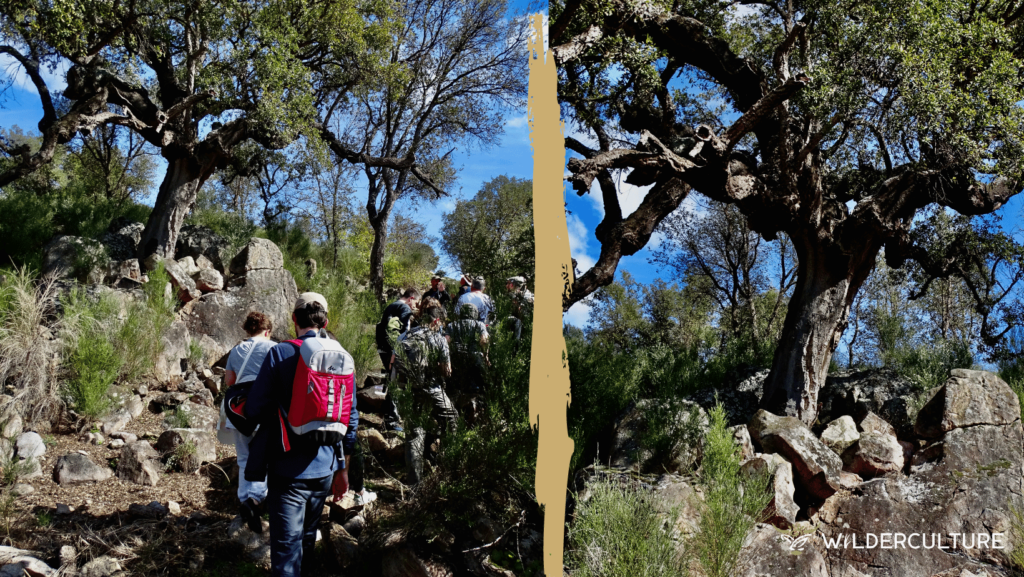
Cork Oak (Quercus suber) and Broom spp
But what I can’t help thinking as we wander down from the view of the river to our fabulous safari style lunch, catered from beautiful local produce, is that this place needs a pulses of regenerative grazing to kickstart the system.
Rewilding – The Theory
There are many different ways to rewild a landscape. Rewilding Europe takes the approach of reinstating a fully functioning ecosystem. Carry capacities of introduced herbivores are carefully calculated in order to avoid overgrazing. These herbivores will then move around the land of their own free will and create the regenerative grazing impact required.
The difficulty here is that without the presence of predators creating alert and dynamic behaviour in the herbivore populations, or humans acting in their place to move herbivores as we do in regenerative farming systems, the animals don’t necessarily do what we want them to do.
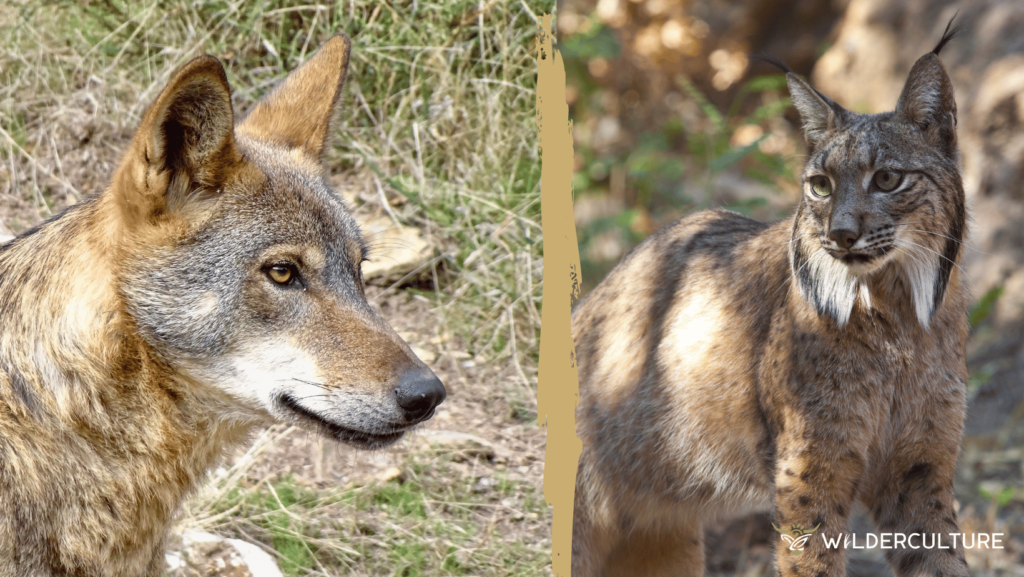
Iberian Wolf (Canis lupus signatus) and Iberian Lynx (Lynx pardinus)
In the Côa Valley, the Horses have only been introduced over the last year and the Cattle are yet to arrive, so it’s really early days. The Wolves are yet to reestablish in the area so even though there is occasional evidence that they have passed through, their predator effect is yet to be of any significance.
What the team are observing is that the Horses, who are very preoccupied figuring out herd dynamics, have established the habit of remaining in one particular area of the land, a shallow valley leading down towards the river where there are springs and fresh green grass. The result is, this area is being over grazed and the rest of the site hardly being grazed at all.
This creates the potential problem of worm burdens, which the team are expertly handling, by carrying out egg counts on the faeces of any animals suspected of having a worms, then removing them from the system for a time if treatment is required, in order not to introduce insecticides to the environment. After lunch I had a lovely time digging around in the horse poo looking for the burrowing dung beetles, who’d left evidence of their activities in the form of small piles of fine earth beside the poo.
It is going to be really interesting to watch this project develop. What I hope for them is that once the horses have figured out their dynamics, the cattle have settled in and the wolves become more active in the area, that the herbivores will move around much more and become the dynamic partner that the land requires for regeneration. What concerns me is that if this doesn’t happen, the health of the soils here could deteriorate and be subject to erosion. Because the climate here is more brittle than in the north of Europe, the role of grazing becomes more critical. This landscape is not such a far cry from semi-arid Africa where without regenerative grazing, desertification easily takes hold.
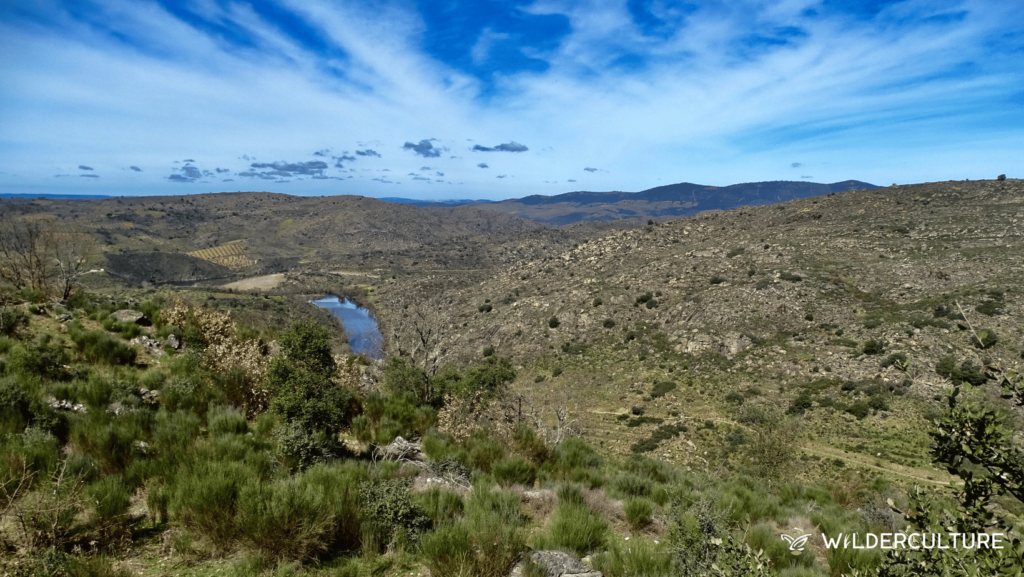
View down to the River Côa
I chatted with the head of conservation about all this. Sara is a dynamic, intelligent woman who understands my concerns but explains that the project’s intention is not to intervene once herbivores have been introduced. They want things to act as ‘wildly’, as possible. and they want the 4 sites currently under Rewilding Portugal’s management, to act as islands for wildlife along the River Côa, places of safe harbour, so that species have a chance to recover.
As we leave the property and walk down a farm track to the river, I take time alone, thinking about what better way there could be to get a project like this off the ground. I fantasise about ideals, imagining the project having their own domestic herd of Cattle that could be brought in and herded, creating high impact, brief pulses of grazing across the whole landscape in order to stimulate regeneration. Or perhaps this sort of project could be brought into a regenerative grazing system for the first couple of years, before shifting to these wilder systems, in order to give the soil a head start.
What is the significance of this to Britain
Rewilding in Britain has advantages and disadvantages over dryer climates like Portugal. A more even distribution of rainfall in the UK means land is able to recover well from simply being rested from grazing animals, a potentially damaging tool the more arid a climate.
The disadvantage Britain has is a lack of any predators to affect wild herbivore numbers and behaviour. Deer populations in Scotland have doubled to over 1 million, since 1990. In some areas of Scotland deer densities of 64 per Km2 have been measured, whereas 2-7 per Km2 is deemed acceptable for ecosystem regeneration.
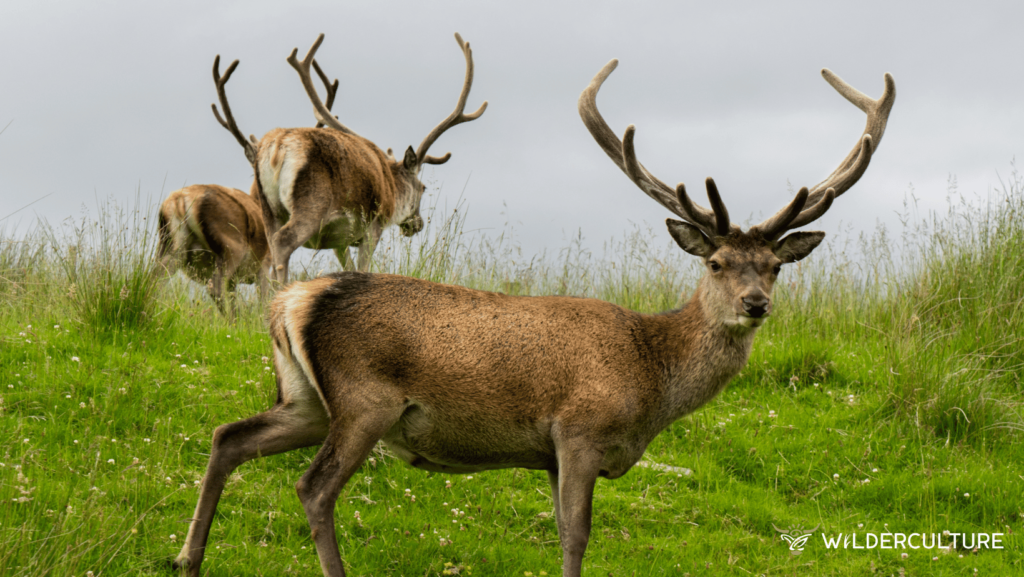
Red deer (Cervus elaphus) in Scotland
Deer alongside set stocked sheep in our uplands have done a pretty good job of preventing any tree regeneration and impoverishing soils and sward diversity due to overgrazing.
The role of humans as a keystone species in the British landscape, therefore has become critical. This is why at Wilderculture we seek to work with landowners and farmers to continue to produce food in our upland and marginal landscapes, using livestock as a tool of regeneration. This then feeds back into biodiversity, productivity and food quality. If you’d like to know more about our work go to www.wilderculture.com
If you’d like to know more about our work go to www.wilderculture.com where you can contact the team.
I’d like to thank all the team at Rewilding Portugal for a fabulous day and wish you all the best with the project.
References
Farming anger forces Rewilding Britain to pull out of Summit To Sea project in Mid Wales
https://www.dailypost.co.uk/news/local-news/rewilding-britain-summit-sea-wales-17119541
Rewilding Europe
Rewilding Portugal
https://rewilding-portugal.com
Vultures of Europe guide: the different species, where they’re found and which are endangered
https://www.discoverwildlife.com/animal-facts/birds/facts-about-vultures-of-europe/
The Lynx went EXTINCT – here’s how it could return
http://www.youtube.com/watch?v=ND3GTG52kJA


No Comments